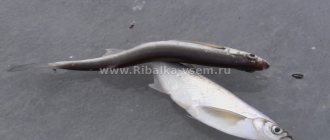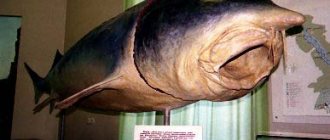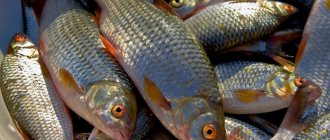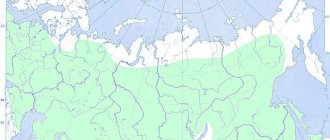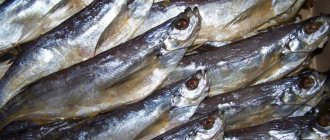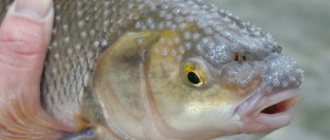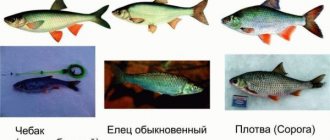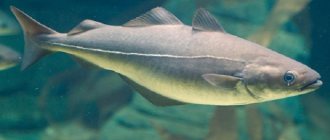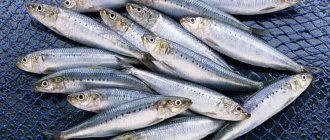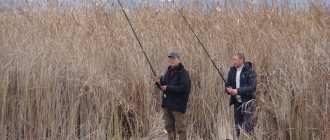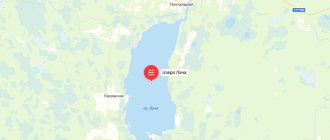- Wild animals
- >>
- Fish
Probably, almost everyone knows such a fish as saberfish . Most often, we can see it dried on the shelves of various stores. We are familiar with the excellent taste of sabrefish, but not everyone knows about the vital functions of fish. We will try to characterize this aquatic inhabitant from all sides, assessing not only the external features, but also studying the habits, places of permanent residence, all the nuances of the spawning period and the favorite fish diet.
Origin of the species and description
Photo: Chekhon
Chekhon belongs to a schooling fish species belonging to the carp family. In its genus, saberfish, it represents one single variety. Due to its elongated physique, the saber fish is similar in shape to a curved saber, but it is not at all similar to a pot-bellied and fairly wide carp. Its body, flattened on the sides, helps the fish to maneuver well in the water column.
Chekhon is popularly called:
- Czech;
- donkey;
- kasturya;
- saber;
- lateral;
- scales;
- saber;
- cleaver
Chekhon is classified as a freshwater fish, but it also thrives in salty sea waters. Chekhon can be divided into sedentary and semi-anadromous. Outwardly, they do not differ, only the latter has more active and rapid growth. Sedentary schools of fish inhabit one freshwater body of water throughout their lives. The semi-anadromous saberfish thrives in salty and desalinated waters of the seas (for example, the Aral and Caspian). Such fish leave sea water with the arrival of the spawning period.
It is worth noting that fishing enthusiasts especially value the Caspian and Azov saberfish. Don fish is also distinguished by its largest size and fat content, which cannot be said about the Volga saber fish, whose meat is lean and its dimensions are small.
Interesting fact: Despite the fact that many sabrefish live in salty sea waters, they prefer to spawn only in fresh water bodies, often covering many kilometers in order to get to spawning grounds.
Description of the fish
The Czech belongs to the Karpov family. As you can see in the photo of sabrefish, it differs from its relatives in its elongated, laterally flattened body, reminiscent of a saber. Hence her nickname “sabelnitsa”.
Other features of the Czech are a greenish back, a reddish lateral line on the lower fins, and a gray color of the tail.
The weight of adult individuals rarely exceeds 1 kg. Smaller fish are usually found. The net often catches specimens weighing only 0.2-0.5 kg. The lifespan of saberfish is 10-12 years.Fish is valued for its taste. Its meat contains many vitamins and minerals and is also rich in protein.
Most often, Czech is consumed dried or smoked. It is ideal for baby food due to its hypoallergenicity.
Appearance and features
Photo: Chekhon fish
As already mentioned, the sabrefish has a saber-shaped body with a characteristic curve at the bottom. The entire body of the fish is flattened relative to the sides; a smooth dorsal line and a protruding abdomen, the keel of which has no scales, are clearly visible. The length of sabrefish can reach up to half a meter (sometimes a little more), and its weight can be up to two kilograms; such a large fish is rare. The average weight of sabrefish is about 500 grams.
Video: Chekhon
The fish’s head is small, so its large eyes stand out, and its mouth, on the contrary, is small and raised upward. Chekhon has pharyngeal teeth arranged in two rows; the teeth are characterized by the presence of small serrations. The fins of the sabrefish are arranged in a peculiar way, the pectoral fins are significantly elongated, and there is a small fin on the back, located not far from the caudal fin. The anal fin has an unusual shape; it is much longer in length than the back; its narrow end approaches almost the tail itself. The scales of the fish are quite large, but easily fall off when touched.
Speaking about the color of saberfish, it should be noted that the predominant color here is silver-white, which has a certain pearlescent tint. Against such a background, a grayish-brown or slightly greenish ridge stands out in contrast. The color of the fins varies from gray to reddish-smoky. The pectoral fins have a yellowish tint.
Interesting fact: The intense shine and ability of the scales to shimmer, refracting rays of light, the fish owes to a unique skin secretion - guanine, which has the properties of an oxide mirror film.
Where does the saberfish live?
Photo: Chekhon in the river
Chekhon loves space and expanse, which is why it chooses wide and deep bodies of water, found in large river systems and reservoirs. The fish is widely distributed from the Baltic to the Black Sea basin. The favorite water areas for sabrefish are: Ladoga, lakes Ilmen and Onega, the Gulf of Finland, the Svir and Neva rivers - this all applies to the northern regions of fish habitat.
In the southern part of its range, the saberfish has chosen the river systems of the following seas:
- Azovsky;
- Caspian;
- Aralsky;
- Black.
Chekhon is a fish of numerous fresh water bodies, located both in Asia and in the vast expanses of Europe, the fish inhabits:
- Volga;
- Bug;
- Dnieper;
- Kuru;
- Kuban;
- Don;
- Terek;
- Syrdarya;
- Amu Darya.
As for the reservoirs of other countries, saberfish are found in Poland, Bulgaria, Sweden, Finland, Austria, Germany, and Hungary. Flocks of saberfish are located in deep places of lakes, rivers and reservoirs. The slave loves running water, choosing the widest areas of reservoirs with uneven bottoms and a large number of holes. The mobile sabrefish deftly maneuvers in the waters, moving in whole schools, swimming to the coastal zone only during feeding.
Interesting fact: Most often, saberfish occupy the middle water layers.
The fish also try to avoid areas intensively overgrown with aquatic vegetation and muddy places, and at night they go deeper.
Where is it found?
The saberfish feels most comfortable where there is more space. It is attracted to large rivers and reservoirs. This fish is distributed from the Baltic to the Black Sea. Azov and Caspian saberfish are widely known. It has its own names in different regions. For example, in Belarus the locals call it shabla (saber) and syaledka. She really does look a little like a herring.
The sabrefish lives in the basins of the Dnieper, Dniester, Don, Volga, Danube, Southern Bug, and Kuban rivers. It is also found in Western European countries - Germany, Sweden, Finland. In Central Asia, saberfish are caught in Lake Sarykamysh. The saberfish has disappeared from the Seversky Donets, although it happens that in the spring it comes here from the Don, but its fishing in this river is prohibited.
In choosing habitats, the width of the river and its depth are important. The disappearance of saberfish from the Seversky Donets is most likely associated with this factor. The river is becoming shallow, there have been no dredgers here in recent years, and practically no work is being done to clear the riverbed. Where saberfish are found, you should not look for them in narrow areas. For fishing, choose the widest place.
What does saberfish eat?
Photo: Chekhon in Russia
The sabrefish goes out hunting from the very morning and in the evening; the fish likes to have a snack:
- zooplankton;
- fish fry;
- flying insects (mosquitoes, beetles, dragonflies);
- insect larvae;
- minnows;
- roach;
- bleak;
- caviar;
- worms.
When it gets sharply cold, saberfish are very reluctant to go out to feed, and may even refuse to feed for a while. The same thing happens during the spawning period. But when the mating season comes to an end, the saber fish begins to eat incredibly. When hunting, the fish swims between the fry in complete calm, without showing any aggression, and then, with a sharp and lightning-fast exit, attacks the prey, dragging it into the water column.
If we talk about fishing, here fishermen use a whole range of different baits to catch the coveted saberfish. Among the baits, maggots, grasshoppers, bloodworms, dung and earthworms, flies, mayflies, dragonflies, gadflies, live bait, etc. are often used. The menu of young fish contains mainly plankton and larvae, insects falling into the water. Chekhon has one interesting feature: when it is saturated, it sinks into the depths.
Interesting fact: Chekhon is able to catch insects circling above the water right on the fly; the fish jumps out of the water column, grabbing its snack and loudly plopping back home.
Photo of sabrefish
Read here Ruff - the secrets of the ruff fishing technique, the necessary gear, bait and bait options (110 photos)
Help the project, share on social networks
0
Features of character and lifestyle
Photo: Chekhon from the Red Book
We have already found out that some fish are classified as semi-anadromous; most of the time they are stationed in the estuarine areas, which are rich in various foods. The other part of the saberfish is sedentary, practically no different from the previous one. Chekhon leads a collective lifestyle, preferring a gregarious existence. This fish spawns only in fresh water bodies; sabrefish often travel hundreds of kilometers to reach spawning grounds.
Chekhon chooses reservoirs with a relief bottom covered with a large number of holes. The fish spend the night in them, wait out bad weather and frosty days, and hide from the intense heat. The saber fish are most active in the late morning, afternoon and early evening. It depends on the characteristics of her diet. The fish hunts for fry or insects in the surface or middle water layers. The saber fish can be called cautious; it rarely swims into the coastal zone and tries to avoid shallow water. This fish feels free and comfortable at a depth ranging from 5 to 30 meters; here it can relax and be more carefree.
The presence of rapids and riffles on the river does not at all frighten the sabrefish; on the contrary, it adores such places, because it has excellent maneuverability and stability, with deft throws snatching various insects, fry and invertebrates from the rapid water flow. With the arrival of September, the saber fish begins to eat intensively, preparing for the winter, then it goes to the depths. It is worth adding that even in the cold winter, the fish continue to be active and are caught directly from under the ice.
Social structure and reproduction
Photo: Chekhon
Female saberfish become sexually mature at the age of three, then their weight should be at least 100 grams, males are already ready to breed at two years of age. The maturation of fish largely depends on the specific places of its settlement, so in the southern regions the saber fish can begin to reproduce at the age of one or two years, in the north this process can drag on until the age of 4 or even 5 years.
In spring, fish gather in large schools, migrating to spawning grounds. This period can last from April to June, it all depends on the climatic conditions of a particular region. The average duration of spawning is 4 days, the water temperature can vary from 13 to 20 degrees plus. For spawning, sabrefish choose places with riffles and shallows, where the current is quite rapid, laying eggs at a depth of 1 - 3 m. Fish eggs are transparent and have a diameter of 2 mm. Chekhon is considered very prolific and can produce from 10 thousand to 150 thousand eggs, it all depends on the age of the fish. The eggs of sabrefish do not stick to underwater vegetation and rock ledges; they are carried downstream along with the flow of water, this provides them with the oxygen necessary for full development. The females that have spawned eggs are also carried away with the current.
After three days, larvae emerge from the eggs and continue to move with the water flow. In this regard, the fry travel long distances from spawning grounds; when they are 20 days old, they already begin to feed on plankton. Over a one-year period, young sabrefish can grow up to 10 cm. Only when the fish turns 6 years old can it reach a weight of 400 grams. The lifespan of sabrefish is about 13 years.
Interesting fact: Chekhon spawn at sunrise, when a veil of morning fog still covers the water surface. This process occurs in an unusual way: the fish can jump high out of the water column, the noise and splashes from the teeming sabrefish can be heard everywhere, and the fish itself often appears out of the water.
Reproduction and lifespan of saberfish
The saberfish is able to reproduce at 3-5 years of age (in the southern regions a little earlier - at 2-3 years, in the northern regions at 4-5). It begins to spawn in May-June, and small fish do this earlier than large individuals. The main condition for the start of spawning is the water temperature of 20-23 Cº, so again in the southern regions it begins to spawn earlier.
Before spawning, saberfish feed very little, gather in large schools and look for a place to lay eggs. Areas with a fairly intense current and a depth of 1 to 3 meters are suitable, these are shallows, sand spits, and river riffles.
Spawning occurs in two passes in the south, and simultaneously in the northern regions. In rivers, sabrefish spawn, moving upstream, then roll back downstream. The eggs are not sticky, so they do not attach to algae or other objects in the water, but roll down to the bottom.
They have a size of 1.5 mm. in diameter, then, after fertilization, settle to the bottom and swell there, increasing in volume to 3-4 mm. Depending on the water temperature, the eggs mature in 2-4 days, then they hatch into 5 mm fry.
The fish grow quickly, feeding on their yolk reserves, form small schools and migrate with the current. After 10 days they switch to plankton and feed on it for a long time. Chekhon grows very quickly during the first 3-5 years. Then growth slows down, therefore, despite a life expectancy of about ten years, rarely has anyone been able to catch a very large individual.
Natural enemies of saberfish
Photo: Chekhon fish
The saberfish has plenty of ill-wishers; young animals that are inexperienced and small in size are especially defenseless and vulnerable. Predatory fish happily eat not only fry and small sabrefish, but also their eggs.
The enemies of saberfish include:
- pike;
- pike perch;
- perch
In addition to predatory fish, danger awaits the saberfish from the air, so while feeding in the surface layers of water, the fish can become a victim of seagulls and other waterfowl. In addition to all the above-mentioned ill-wishers, saber fish may suffer from various parasitic ailments to which this fish is susceptible.
Whatever one may say, the most dangerous insatiable enemy of fish is a person who, while fishing, catches sabrefish in huge quantities using nets. This is all due to the fact that this fish has become famous for its unsurpassed taste, and the benefits of eating it are undeniable. Low calorie content, combined with a whole range of vitamins and macroelements, has a beneficial effect on the human body, normalizing metabolic processes, strengthening the skeletal system, lowering cholesterol levels, and removing a number of harmful acids.
The saberfish suffers not only from industrial fishing, but also from ordinary fishermen who are constantly active, trying to get a larger catch. They catch sabrefish using various lures and baits using a float rod, spinning rod, or donkey (feeder). The last option is considered the most promising and effective. Fishing enthusiasts have long studied all the habits and preferences of saberfish; they know that the most active bite begins in the morning, when the fish is busy feeding.
Fishing Features
the migration of sabrefish occurs , when the fish moves in large schools. This time is most favorable for commercial fishing. With the onset of cold weather, the activity of the fish decreases, it is almost impossible to catch it at this time, it tries to lie down on the bottom and take refuge there during the period of frost.
The time of intense feeding occurs in the period after winter and before spawning. The optimal time of day for a good bite is morning and afternoon hours, peak activity. The usual conditions for finding fish are depth and a spacious place, that’s where you should look for it; in overgrown muddy shallows there will definitely be no catch. Usually the fish stands on the border of “fast” and “slow” water.
Tackle for fishing
When fishing for sabrefish, the most common devices are used: float rod, feeder, spinning rod, bombard, elastic band. It is important to consider some features:
- When fishing with a feeder, the area is initially fed using a feeder located on the tackle. When river fishing with a current, the bait is weighted with clay or earth so that it remains in place. Small maggots or bloodworms are often added to complementary foods. When casting, the feeder should remain full. Usually the bite does not take long to arrive; as soon as the feeder lies on the bottom, the nimble saberfish grabs the bait within a few minutes.
- Fishing with a float requires tightening the float at intervals of 1 minute. Chekhon reacts well to moving bait.
- You can successfully catch sabrefish on light and ultralight spinning rods; after casting, you need to wait until the bait falls to the bottom, and then perform stepwise retrieving using a reel. Used when fishing with a spinning rod, a retractable leash with bait made of edible rubber. A repeated cast must be made to the same place where the bite has already occurred, since the fish stay in schools. For spinning fishing, baits such as a wobbler, a vibrotail, edible rubber, a twister, and a fly similar to a fry are suitable.
- Fishing for sabrefish is popular among fishermen using a bombard, which is the name of a float with an extension and monofilament inside. This tackle can be attached to a rod more than 3 meters long. Under the bombard there is a stopper that fixes the equipment in the desired position. Then a leash with a hook and bait are fixed. At the same time, several hooks can be attached to such tackle, increasing the catch. For more effective fishing after casting, you need to slowly reel in the gear. Chekhon, as a rule, attacks in the first minutes of the drive.
Population and species status
Photo: Chekhon in Russia
As we have already understood, sabrefish lead a school, collective life; the distribution area of the fish is quite extensive, but not uniform in terms of numbers. In some regions it (the number) is large, in others it is insignificant. It has been noticed that in the northern regions of our state (Ilmen, Ladoga, Onega, etc.) saberfish have a high population density.
In the Caspian Sea basin, ichthyologists have discovered a couple of populations of sabrefish – Ural and Volga; the fish differ only in size and age. Researchers note that flocks of Volga saberfish are more numerous and crowded. In addition, the Volga population, when compared with the Ural population, inhabited much larger water areas. There is also evidence that the Azov saberfish is numerous and forms a fairly large population inhabiting the northern regions of Azov, from where schools of fish rush to the Don.
Not everywhere the situation with the population of sabrefish is going well; there are areas where the number of fish has sharply declined, so bans on its fishing are being introduced there. Such regions include Moscow and the Moscow region, where starting from 2021, catching sabrefish in local reservoirs is strictly prohibited. The following objects are included in the list of the same protected places:
- Bryansk region;
- northern Donets;
- upper reaches of the Dnieper;
- Lake Chelkar (Kazakhstan).
In all of the above areas and water bodies, fishing for sabrefish is strictly prohibited, due to its low numbers; in some places this fish has been assigned endangered status, so it requires certain protective measures.
